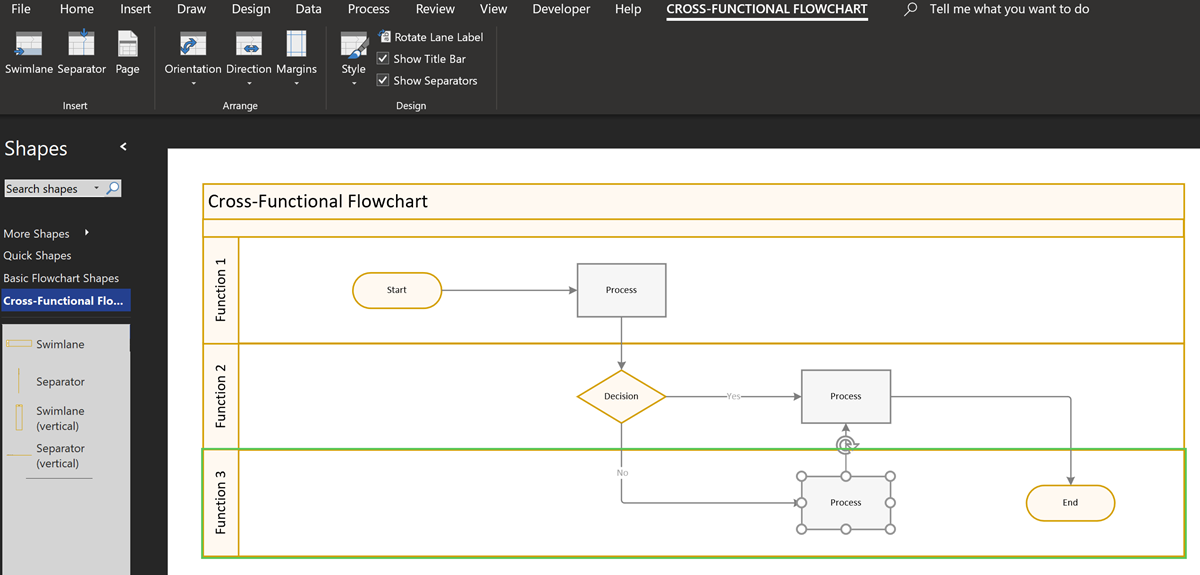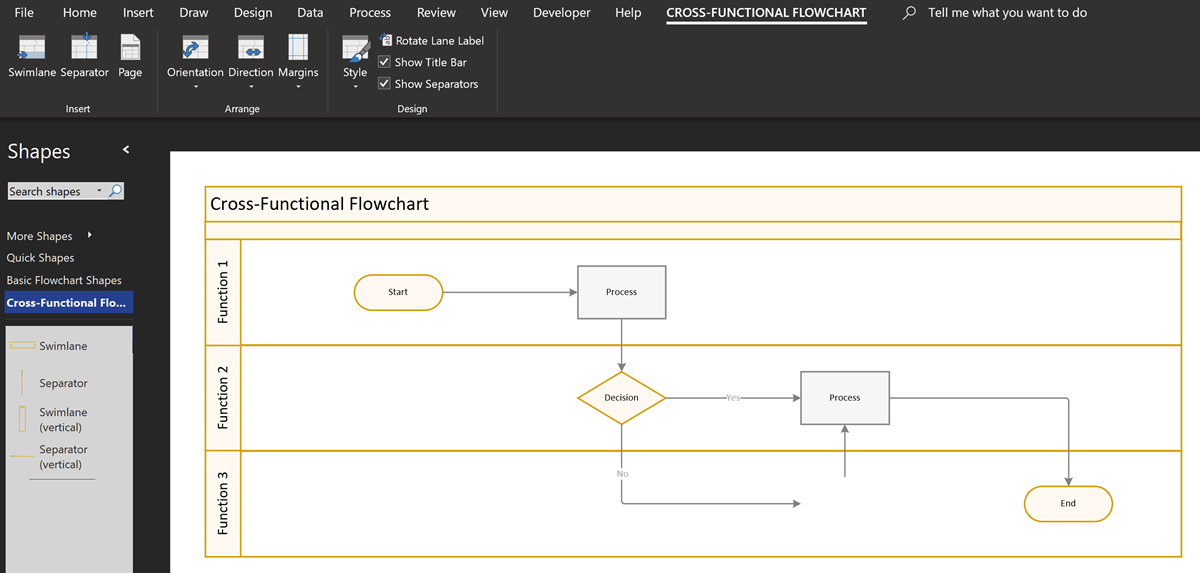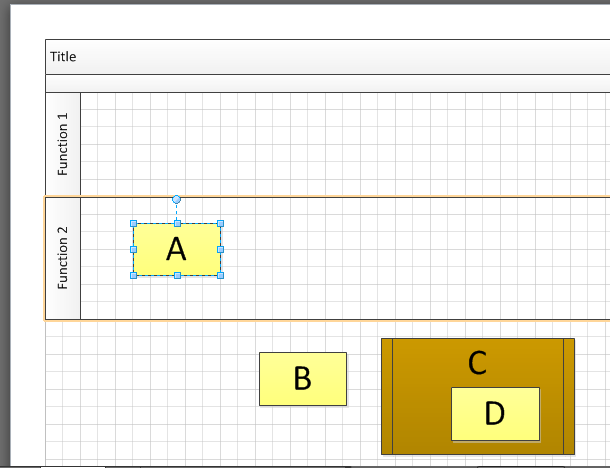The concept of Structured Diagrams was introduced in Visio 2010 and is featured in many of the templates supplied with Microsoft Visio, and in some third-party solutions, like mine. Connectors, callouts, containers and lists are the key parts of a structured diagrams, and there are times when preventing the deletion of members of a container or list is desirable.
[Read more…] about Preventing Deletion of Container Members in VisioContainers
Enhancing the Built-In Containers in Visio
The concept of Structured Diagrams was introduced in Visio 2010 to provide core functionality for a variety of the templates in Visio, such as the Cross-Functional Flowchart, BPMN Diagram and Wireframe Diagram. This is primarily evident as Containers, Lists and Callouts and they can be customized (see Custom Containers, List and Callouts ), as shown in some of my previous articles ( see https://blog.bvisual.net/?s=container). One example of this extension can be found in all of the flowchart shapes that placed into a swimlane in a cross-functional flowchart. They have a Shape Data row, Function, that automatically inherits the text entered into the header of the swimlane. In another example, a Visio user can use Insert / Diagram Parts / Container to visually group other shapes together, and update the header text of the container. Well, I often do want my custom shapes to inherit the text of a container, so, in this article, I show how the built-in containers can be enhanced to provide this ability.
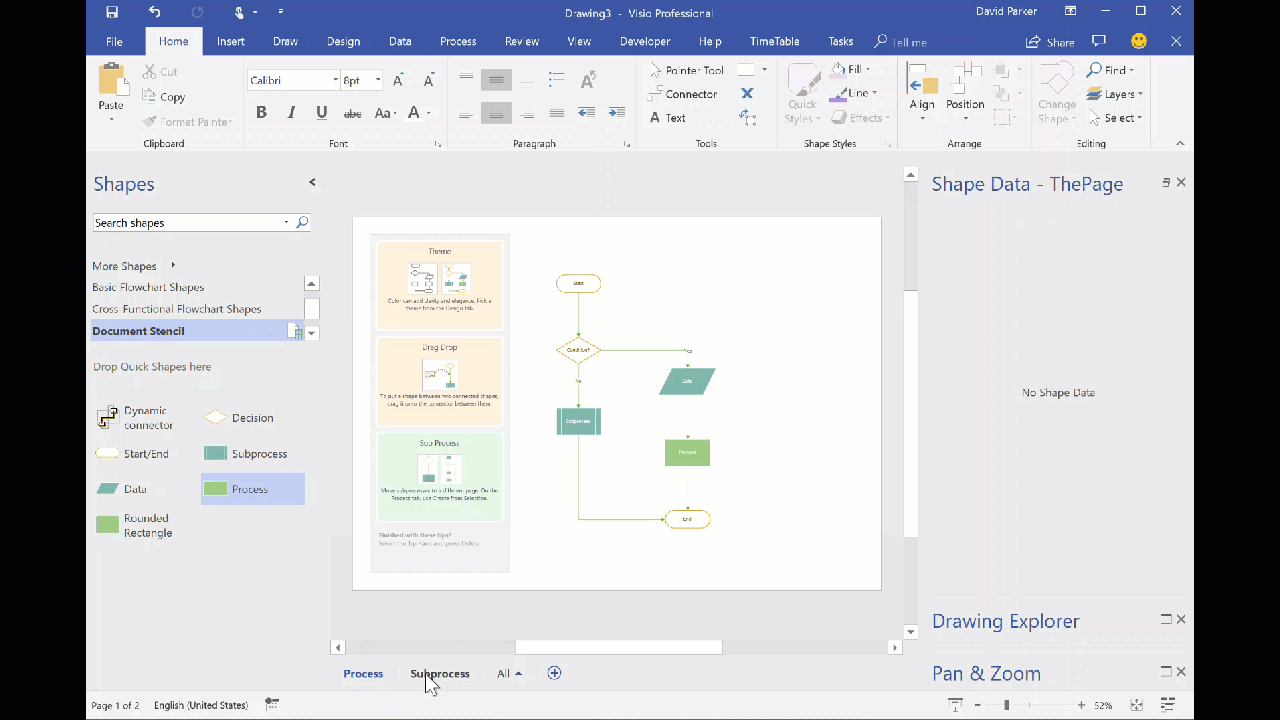
You should be aware that I often exploit the fact that Visio creates a local copy of each master shape that it uses within a document. This can be modified and set to match master by name on drop, to ensure that it is the one to use, even if the original Microsoft provided version is used. In this case, I use this trick to create hidden, enhanced versions of the containers that are available in the gallery of containers. Microsoft also do this with the Dynamic connector shape in a number of their own templates.
If you examine the Function Shape Data row of any of the flowchart shapes, then you will find the formula:
Update to multiSelect & tracing sub-shape connections in Visio
Most of my Visio diagrams have simple connections between shapes, and my previous post about connections used a flowchart as an example (see https://blog.bvisual.net/2016/08/09/understanding-visio-connections/ ). However, it has come to my attention that some Visio developers add connection points to sub-shapes of Visio group shapes, and then connect between the sub-shapes. This means that the code in my previous article would need to be adapted to cater for this scenario. It has also meant that I needed to update my free multiSelect Visio add-in needed an update. The updated version (1.0.6.0) is for Visio 2010+, and is available from http://bvisual.net/Products/multiSelect.aspx .
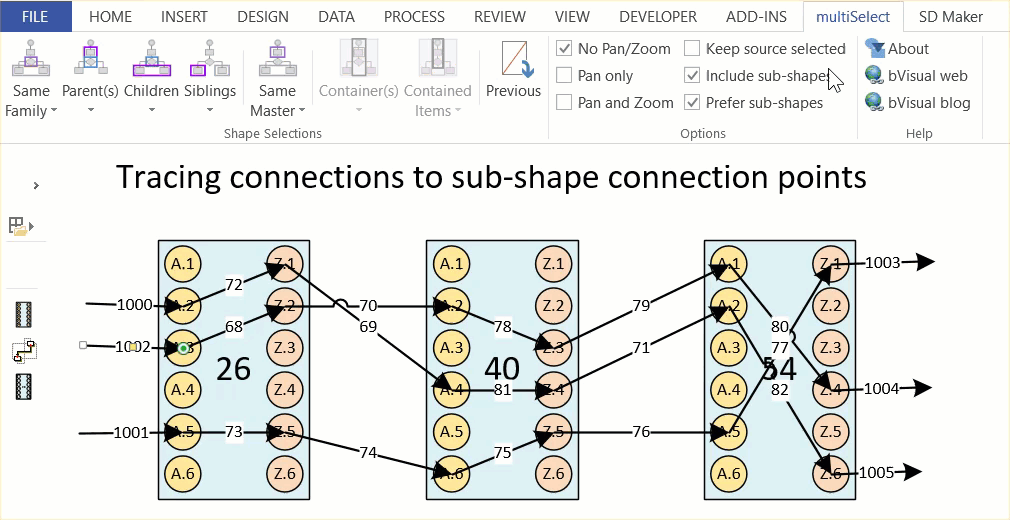
Multiple Selection Methods for Visio Diagrams
Much as I love using Visio, I have always felt that there are a few selection methods missing, and I often have to some extra buttons into solutions to make up for this. There are many types of diagrams that have shapes connected to each other, usually with a connector shape, and the user needs to be able to traverse these connections quickly and easily, so I have created a Visio 2010 add-in, multiSelect, that adds a lot of different selection methods that are accessible via an extra ribbon tab when ever a shape is selected.
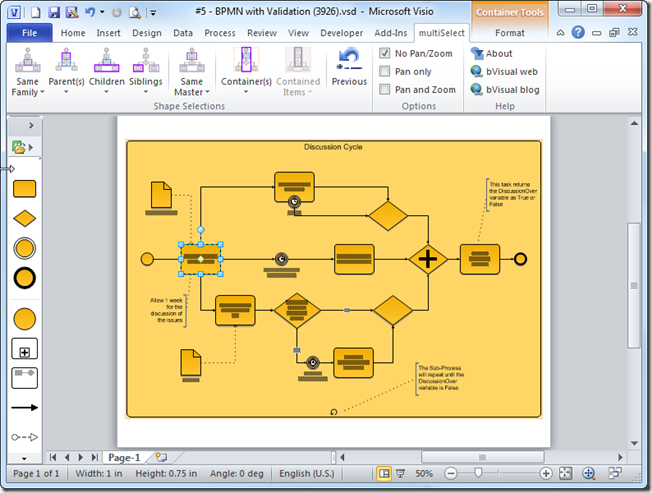
Visio 2010 Container Problems
Update : I have received a corrected response from my friends at Microsoft regarding the use of Spatial Neighbors and Containers, so I have to revise this post from its original. The changes are marked in Red.
The Structured Diagramming API in Visio 2010 is really neat, but there are a couple of problems that I think you should be aware of. The first one is about how shapes can appear to be in a container, but aren’t really; and the second is how the Container type prevents SpatialNeighbors from working … unless you use a new constant.
Let’s start with an example diagram that contains three Process shapes on a Cross Functional Flowchart. Notice that I have select the Process shape labelled A and this has caused the swimlane Function 2 to display a brown highlight … this is a good indication that the Structured Diagramming
API is working, and that Function 2 is a container shape. I have placed two more Process shapes below the swimlanes, and one of them (C) is on top of a SubProcess shape.
Writing rules to validate diagrams in Visio 2010 – A worked example
Microsoft Visio 2010 Premium Edition introduced an extension to the Visio Type Library called the Validation API. This provides the capability to validate a Visio diagram to ensure that its construction complies with industry-standard or company –wide rules.
Organizations are able to use this new feature to encapsulate business logic as validation rules, grouped within rule sets.
Microsoft Visio 2010 Premium edition contains rule sets for use with Basic and Cross-Functional Flowcharts, BPMN Diagrams and SharePoint Workflow Designer diagrams.
This article describes how you can create your own rule sets and rules.
